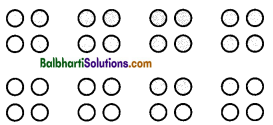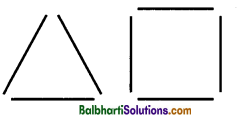By going through these Maharashtra State Board Class 11 History Notes Chapter 4 Vedic Period students can recall all the concepts quickly.
Maharashtra State Board Class 11 History Notes Chapter 4 Vedic Period
Vedic Culture:
Vedic literature, Linguistics and Archaeology:
Most of the information about their culture is derived from the Vedic literature. This literature is fundamentally in the form of the faith systems of the Vedic tribes and eulogies of their deities. There are various opinions about the chronology of the Vedic culture. However, there is a general agreement that the Vedic people composed Rigveda in India around 1500 B.C.E. However, Lokmanya Tilak calculated this date as 6000 B.C.E. on the basis of astronomical events.
This debate began in the 16th century. Till then the concept of the ‘Aryans’ was not known. In the 16th century, the European academics became aware of the similarities between Sanskrit and Latin- Greek languages. It resulted into the notion of the ‘Indo-European’ language family.
Vedic Literature and Social organisation of Vedic Times:
The Vedic literature is supposed to be the earliest literature of India. They were written in Sanskrit. The four Vedas form the core of the Vedic literature.
Rigveda: The Rigveda contains Suktas (hymns) composed to eulogise the deities. The verses in Rigveda are known as ‘Rucha’. A number of Ruchas strung together makes a Sukta (hymn). Many Suktas make one Mandala.
Yajurveda: The Yajurveda offers explanation of the sacrificial rituals. It explains when and how the mantras should be used. A Rigvedic richa, when recited in sacrificial rituals, is regarded as Mantra. The Yajurveda is a combined composition of the Rigvedic richa in verse and the explanation of its use v as a mantra in prose.
Samaveda: The Samaveda is a text that gives the rules of reciting mantras in a musical form. The Samaveda is regarded as the text that is fundamental in the development of Indian music.
![]()
Atharvaveda: The Atharvaveda is about the day-to-day life. It contains information about charms and medicines for various problems and diseases. It also talks about the norms of statesmanship.
Varna System:
The Vedic society was organized into four classes known as ‘Varna’, namely, Brahmana, Kshatriya, Vaishya and Shudra. The varna system is first mentioned in the tenth mandala (chapter) of the Rigveda. In the later Vedic period, the varna system lost its flexibility. Also, the caste system got rooted firmly by this period.
In the beginning, the varna or the caste was decided by one’s occupation. Later it came to be determined on the basis of birth. Hence it became impossible to change one’s varna and caste, in which he/she was born.
![]()
Ashrama System:
The Ashrama System of the Vedic culture lays down the norms of living an ideal life by dividing the span of human life into four successive stages, namely Brahmacharyashram, Grihasthashram, Vanaprasthashram and Sanyasashram.
- In the first stage one was expected to spend an austere life and earn knowledge and necessary occupational skills.
- In the second stage one was expected to fulfil one’s prescribed duties with one’s wife by his side.
- In the third stage one was expected to retire from the active life of the householder and if the need be, to give advice to the younger people. It was also desirable that one should stay away from human settlement.
- In the fourth and the last stage one was expected to renounce all the family bonds, accept a wandering life and to go away. A Sanyasi was not permitted to settle at one place for a longer time.
The Early Vedic Culture as unfolded through Vedic Literature:
The Rigvedic culture is the culture of the Early Vedic period. The tribes of the Early Vedic period staying in the Saptasindhu region have been mentioned in the Rigveda. Among them occur the names like Puru, Anu, Yadu, Druhyu, Turvash, etc. They were the tribes who subsisted on agriculture.
The Rigveda mentions a battle known as ‘Dashradnya Yuddha’ that was fought among ten tribal chiefs. In the Early Vedic period along with the Rigvedic tribes, other local tribes also stayed in the Saptasindhu region, who did not belong to the Rigvedic people. They were called ‘Das’, ‘Dasyu’ and ‘Pani’. Panis were looked upon as enemies by the Vedic people. Panis used to steal the cattle of the Vedic people.
Later Vedic Period:
Later Vedic Period is dated to around 1000-600 B.C.E. The information about this period is gathered from the treatises written in that period. The material culture as reflected in the epics, Ramayana and Mahabharata was studied with the help of archaeological evidence.
A picture of the migration in the Later Vedic period can be gathered from the Saptasindhu region toward the east and its geographic markers from the literature of that period. The Later Vedic period saw a gradual formation of confederacies of the Vedic villages. They were known as ‘Janapada’. Generally, the seniors and the elites in a Janapada collectively took social decisions.
![]()
Glossary:
→ Philology – A discipline that traces the etymological history and meanings of words.
→ Etymology – The study of the origin of words and the way in which their meanings have changed throughout history.
→ Dasyu – It is derived from the Sanskrit word “Dasa”. Usually means enemy or servant.
→ Suktas – Hymns.
→ Eulogise – Praise highly in speech or writing.
→ Oligarchy – A small group of people having control of a country or organization.



